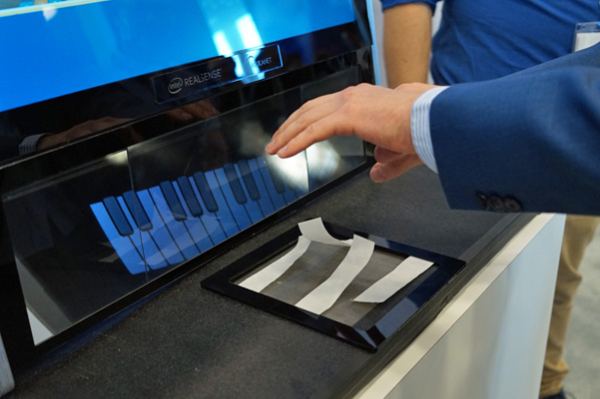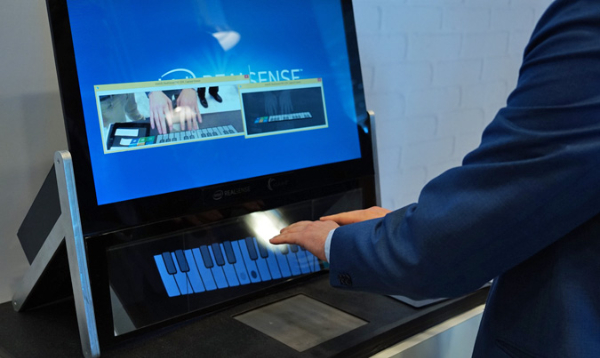Holographic Computer Gives Tactile Feedback in Mid-Air
A prototype all-in-one PC from Intel has navigation that appears to float in front of the screen and uses bursts of air to provide tactile feedback.
SAN FRANCISCO — In the past couple of years, we've seen a slew of augmented reality headsets and apps, designed to insert virtual objects into your real-world field of view. But what if you didn't need glasses for the software to pop out of the screen? At its IDF 2015 conference, Intel showed off a prototype all-in-one PC with holographic apps that appear to float in mid-air and give you haptic feedback when you touch them.
Though Intel showed off its holographic PC on stage during CEO Bryan Krzanich's keynote address, the groundbreaking gadget first appeared at CES 2015, where I found it quietly sitting in a corner of the company's booth. While the software and hardware appears identical to the demo unit I used in January, the haptic feedback feature is new and, it appears to work reasonably well.
MORE: Intel's IDF Demos: The Good, The Bad and The Terrifying
The PC has a large LED screen with an Intel RealSense webcam on top that points down at the front of the device to register your gestures. Below the screen sits a row of glass panels, through which the holographic images project. A second LED screen sits a couple of inches behind the glass, tilting at a 45-degree angle. As light from this display passes through the panel, it bends and creates the illusion of objects floating in front of the computer.

Though the holographic images appeared to float only a couple of inches in front of the bezel, an Intel rep told us that it would be possible to make them jut out further in future applications. A holographic computer could sit inside a store window and project touchable software objects to users standing in the street.
To create the tactile feedback experience, Intel built a small ultrasonic air vent into the table in front of the PC. When you interact with a haptic-enabled app, it blows a small amount of air onto your finger tips. The rep told us that, in the future, the air blowing could be built into the PC bezel itself and hit your fingers horizontally.

The demo holographic software consists of six apps — Twitter, calendar, solar system, piano keyboard, media player and weather — which I launched by pressing shortcut tiles which appeared on the right side of the floating display. The piano app was the most interesting, because it was the only app that gave me tactile feedback.
Get instant access to breaking news, the hottest reviews, great deals and helpful tips.

As I reached out and touched each key, the computer responded both by playing music and blasting my finger tip with air. The air felt nearly identical to the haptic feedback you get on Android smartphones, but just a tad weaker.
When I fired up the solar system app, I saw a 3D map of some planets and was able to tap on one and get a description screen for it. The Twitter and calendar apps weren't fully functional on the demo unit, while the weather app showed forecast info and the media player provided a simple set of pause/ play/forward buttons that floated in mid-air.
Throughout my hands-on, the floating images appeared colorful and crisp. However, as I observed in January, the holographic images disappear at about 45 degrees to the left or right. If you have a friend standing next to you, the limiting viewing angles could be a problem, but if the technology were being used for a holographic ATM keypad, it would be a great privacy feature.
The prototype on display at IDF is very much a proof-of-concept and nowhere close to becoming a shipping product. However, with the addition of tactile feedback, the concept has become even more compelling and useful, both in the home and in public kiosks. We look forward to seeing how Intel's holographic technology evolves.
